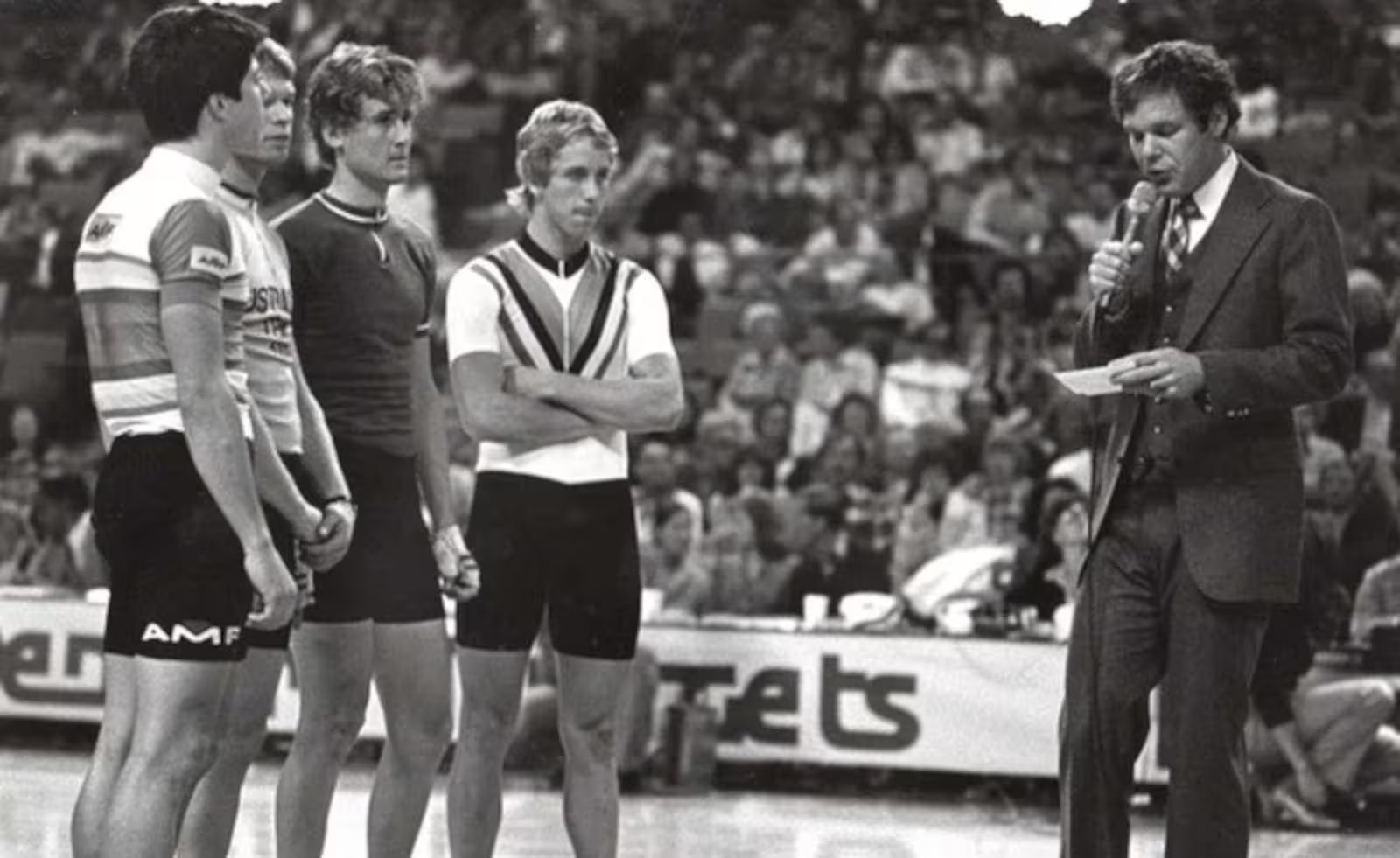In November 1979, the Denver Coliseum transformed into an indoor cycling hub as promoters of the Red Zinger Bicycle Classic sought to capitalize on Colorado’s burgeoning cycling scene. They aimed to provide greater exposure for rising road stars by hosting a unique winter competition on a portable track. It was reminiscent of the six-day races that had captivated audiences both in Europe and the U.S. during their heyday.
Short, fast, sketchy track
To create this small board track, three semi-loads of 14,000 nails and bolts, along with enough marine-grade plywood to build three houses. Designed by Dale Hughes, the velodrome was a compact 125-m oval, making it the smallest ever constructed. This posed a significant challenge for competitors. They faced 20-degree straightaways and steep 50-degree banking at the turns, subjecting them to disorienting G-forces of up to two and a half times their body weight every four seconds while racing elbow to elbow.
Historic event
The event was historic for several reasons. It marked the first cycling event and the first rights fee ever paid by ESPN for a non-league broadcast. It offered a rare opportunity to showcase the sport to a wider audience. The roster was a mix of seasoned track veterans like multi-time U.S. madison champions Roger Young and Danny van Haute. There were also some relatively inexperienced track racers. Among them was an 18-year-old Greg LeMond, who had just returned with a gold medal from the junior world championships in Argentina. While some road racers, like Dale Stetina and Tom Schuler, had a bit of track experience, LeMond had never ridden on such a small track before. Let alone, participated in head-to-head competition.
LeMond tries track racing
The transition from road racing to track racing presented significant challenges. Unlike the 12-plus gears at the time found on freewheel road bikes, the future Tour de France champion would use the direct-drive with only one gear and no brakes. Thankfully, LeMond was a fast learner.
The 40-minute event was commentated by cycling legend Phil Liggett. As the event captured the attention of cycling enthusiasts, video producer Michael Aisner reflected on the long journey to restore the original footage. “Although this event was chock-full of action, no one would have watched it in its original…
Click Here to Read the Full Original Article at Canadian Cycling Magazine…

